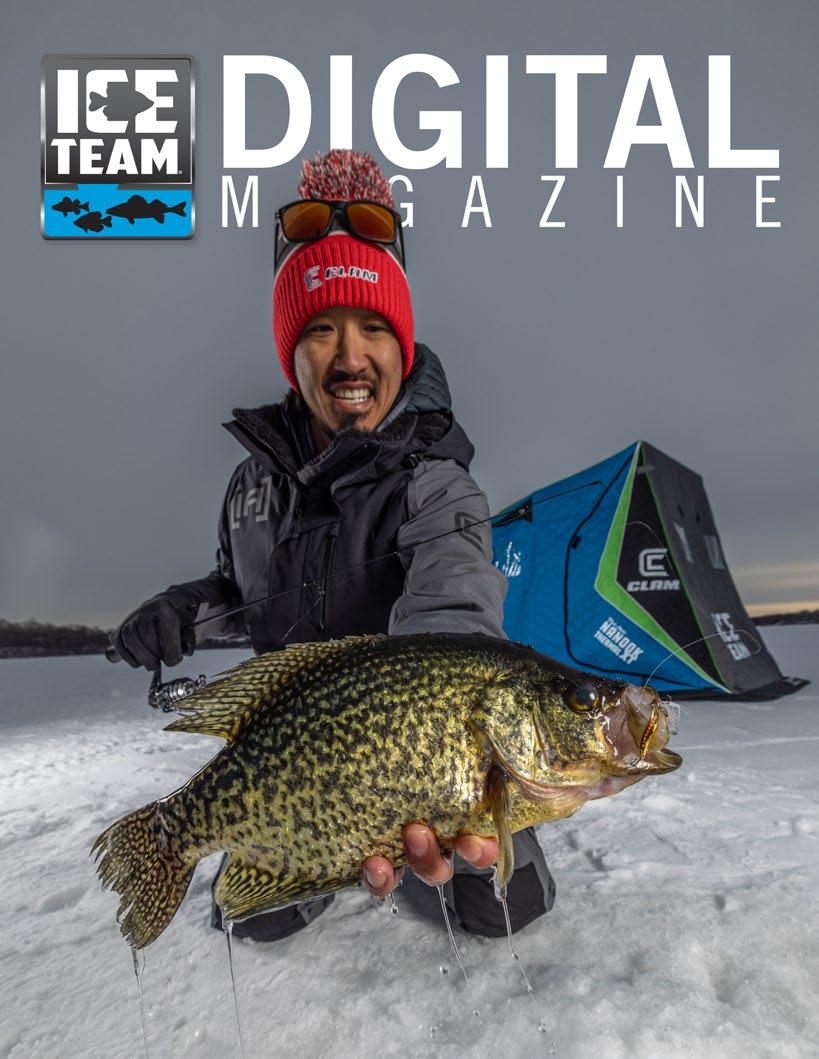
DECEMBER ISSUE | 22-2023 SPOONING CISCOES SAFETY & STRATEGY FOR EARLY ICE PANFISH THE FROZEN KITCHEN STING’N EYES DON’T OVERTHINK IT A DAY IN THE LIFE OF AN ICE FISHING GUIDE MAKE ’EM CHASE GITCHEE GUMEE ICE ANGLING CRYSTAL CLEAR
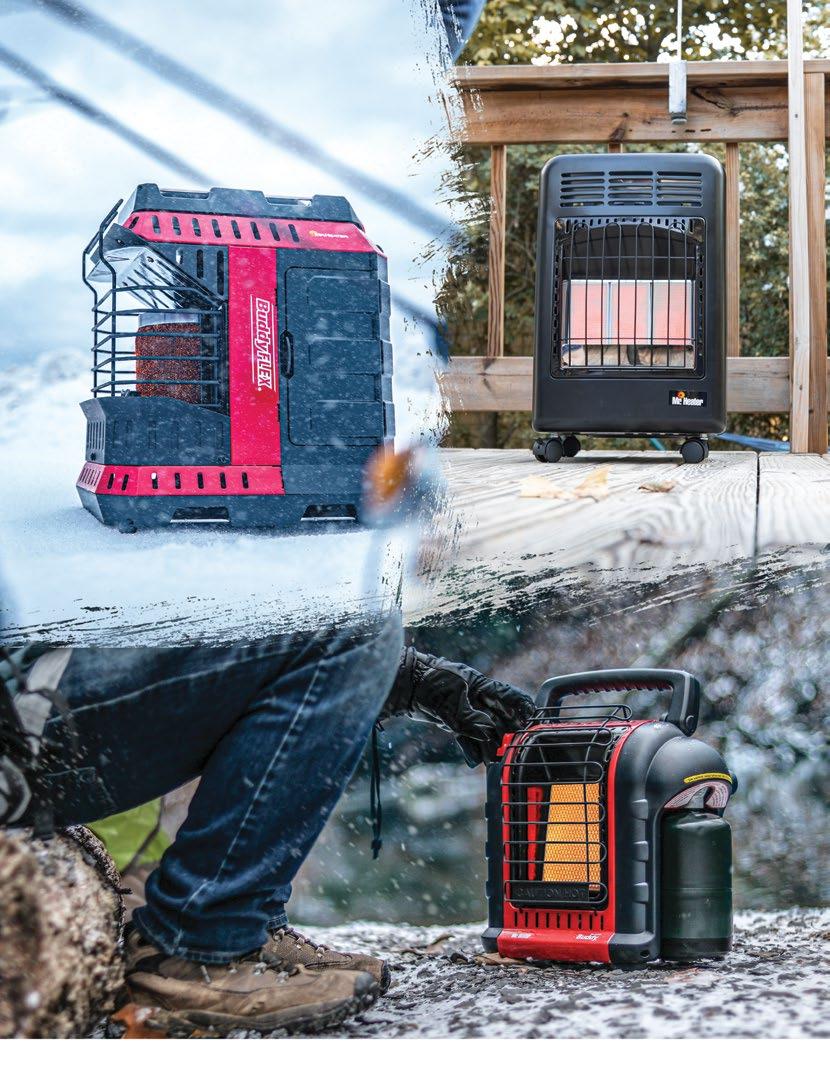


Full line of products at mrheater.com • 800.251.0001
Whether it’s fresh from the lake or straight from the store, your favorite meals are even better with Shore Lunch. Try our breading, batters, soup mixes and more today for a taste of the shore, no matter where you go.

Whatever the catch, we’ve got it covered.
shorelunch.com
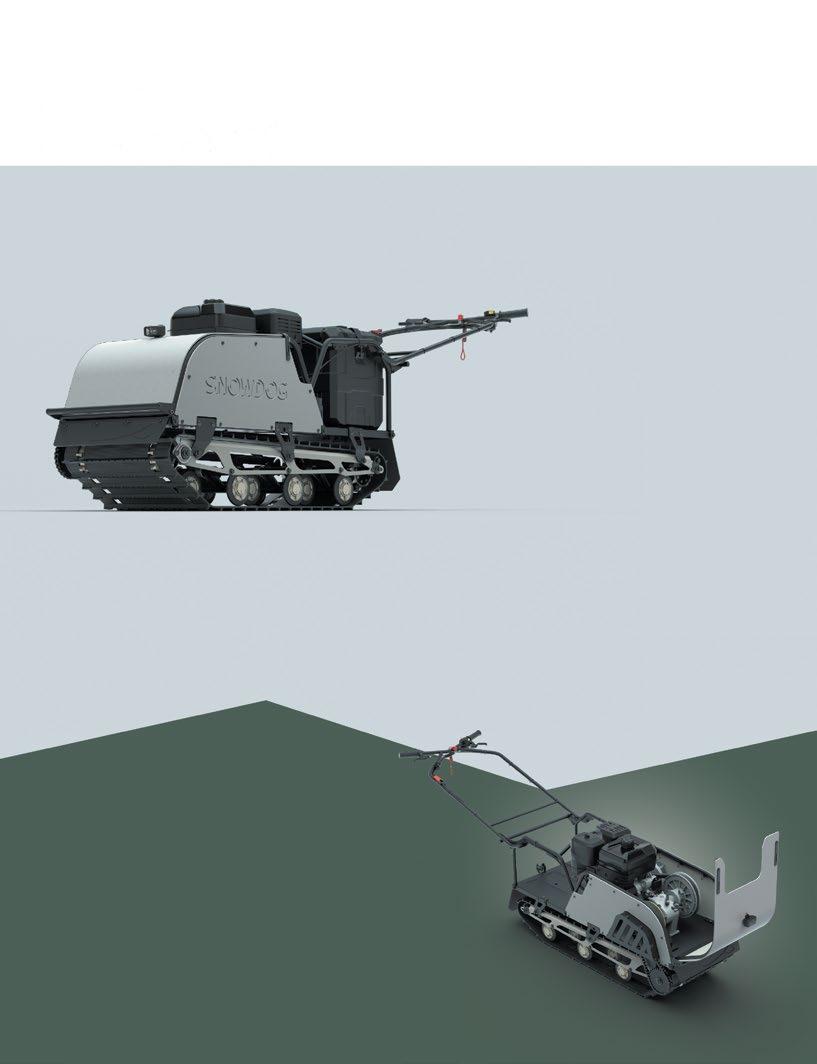
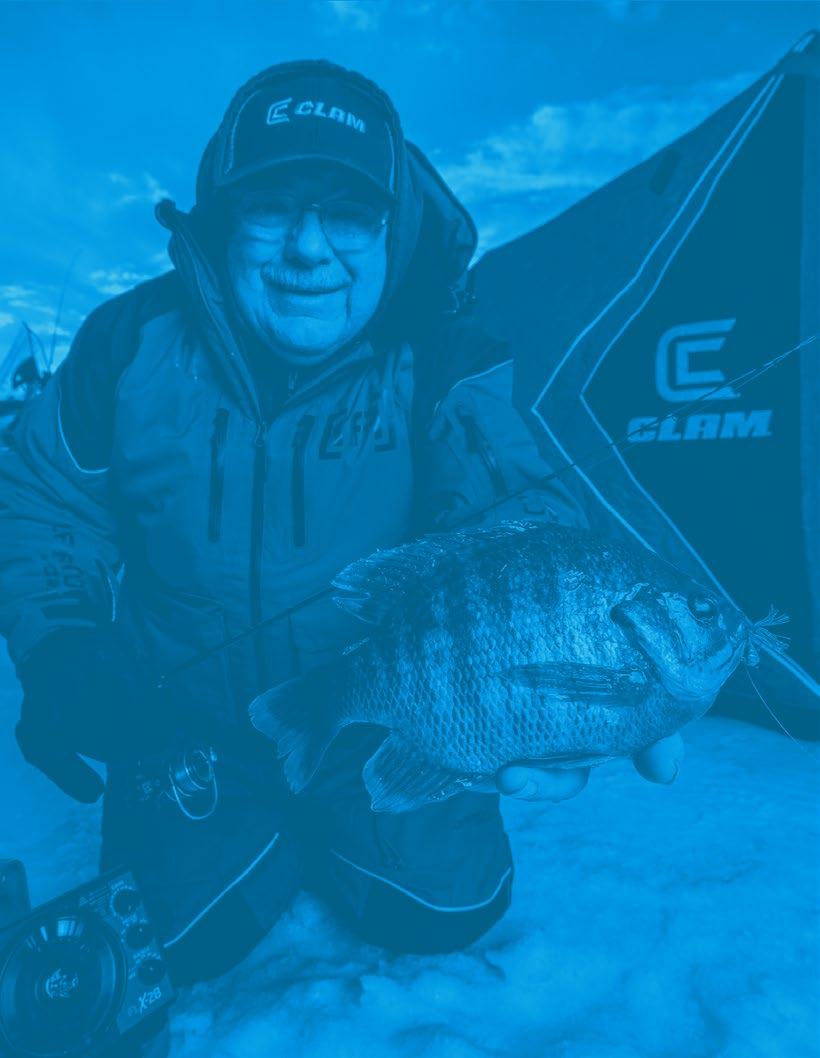

DIGITAL Magazine TABLE OF CONTENTS 10 SAFETY & STRATEGY FOR EARLY ICE PANFISH 06 SPOONING CISCOES Ice Team Magazine Editors: Matt Johnson Contributing Writers: Drew Lewandowski, Tim Moore, Ryan Salemi, Jared Houston, Rod Woten, Scott Olson, Jeff Elliot, Chuck Mason, Ryan Pinkalla The True Center of the Ice Fishing World PH: 763 - 231 - 4126 FAX: 763 - 231 - 4121 Email: info@iceteam.com Website: iceteam.com Ice Team Manager Matt Johnson facebook.com/ IceTeamRevolution twitter.com/IceTeamNews youtube.com/IceTeamVideos Advertise with Ice Team Call MSPN at 800 - 989 - 6776 or email sales@iceteamfishing.com Blue42 Agency 9325 Upland Ln N Suite #310, Maple Grove, MN 55369 PH: 612 - 584 - 1395 Email: support@goblue42.com Website: goblue42.com Editorial Director: Matt Johnson Art Director: Brian Lindberg Design: Jeff Bibbs 12 STING’N EYES 16 A DAY IN THE LIFE OF AN ICE FISHING GUIDE 20 GITCHEE GUMEE ICE ANGLING 22 DON’T OVERTHINK IT 26 THE FROZEN KITCHEN 28 MAKE ‘EM CHASE 32 CRYSTAL CLEAR

As cisco populations in the Great Lakes continue to rebound and expand so do the angling opportunities. Compared to many of their inland counterparts, Great Lakes ciscoes are bigger and more piscivorous. That steady diet of fish means that almost everyone you catch qualifies for a “master angler” patch here in Michigan. Cold water and productive drowned river mouth lakes connected to Lake Michigan offer a unique opportunity to catch them on the ice.
Adult ciscoes hit these waters in the searching for pelagic bait. Mostly young of year alewives but I’m sure they don’t refuse shad or shiners if they are encountered.
They do most of their hunting in the deep basins of these waters (35 -100+ feet). On the few fisheries I frequent, I’ve found the basins closest to the Lake Michigan connection point to be the most productive.
Things are vastly different depending on the fishery. Places that they’ve established as winter feeding grounds can have MEGA schools of them. Drilling holes and looking with electronics is the deal here. I’ve often found fish in these places will relate to the bottom and it’s possible to come across schools that are 10 feet or more thick. It’s not quite as easy on other fisheries that are still gaining traction from the
recovery and expansion of ciscoes. Those fish are total roamers and generally there’s only 1-3 at a time down there. They’ll always be suspended in the upper half of the water column and be on the move. If you don’t get a bait in their area quickly they are gone, it’s like chasing ghosts at times.
Once you get around them it’s time to get to the fun part. These things are aggressive and if they don’t react right away to your spoon it’s safe to say it’s not a cisco. I think you can catch them on a lot of different things but for me various Clam Pro Tackle spoons are the deal. If I’m on a big school of them it is hard to beat a Leech Flutter Spoon (1/8 on up
COMPARED TO MANY OF THEIR INLAND COUNTERPARTS, GREAT LAKES CISCOES ARE BIGGER AND MORE PISCIVOROUS. iceteam.com >> Ice Digital December 2022 Issue >> 7
to the ½ ounce Super Leech), the feathered treble is often in the back of their throats! The new Pinhead Pro in the 1/8 or ¼ ounce size is also going to be a great choice and is going to get back to the school faster. Other times I’m targeting a mixed bag of perch and cisco. While perching I’m constantly watching that top half of the water column for any sort of mark. If I see anything I’ll reel up a speed spoon tipped with spikes and usually capture one of those roaming ciscoes.
Regardless of what you are using for bait, making them chase it is the key to success. Keep it above them and keep it away from them. They charge it hard and then often miss only to come back again and again until they get it. I’ve brought them up high enough that I can look down the hole in 50 feet of water and see them trying to eat the spoon. While aggressive they have small mouths and it is common
for them to need several attempts. If they seem to get stale, moving it even faster seems to get them interested again. The bite is often an “up bite” and you’ll have to watch for slack after one of those hard charges.
Delicate mouths and small hooks make battles tedious and intense. Especially when they can power back to the bottom on runs, peeling out 20 feet of drag or more. Many of them are 2-3.5 lbs and can really be feisty (and a lot of fun) in that cold water.

It’s one of the more unique fisheries we have. I only expect it to get better and increase in popularity in the years to come.





With the waters of the Ice Belt beginning to freeze over, we are well on our way to putting boots on ice in the near future. Many ice anglers choose to target bluegills, crappies, and perch once the ice is thick enough as these species have congregated in and along shallow water weed beds and are still looking for the last bits of

good insects, bloodworms, and various other food sources. This is also the time when safety above all else must come first in our minds before even planning a trip onto the frozen water. As excited as we all get once we see the thermometer drop and hear about those first ice reports (I being one of them), as the saying goes, no fish is worth going through the ice for. Nearly every state outdoor agency recommends at least four inches of good ice be on the lakes before we set foot out onto them. Once it gets to that point though, it’s game on!
It is important to make sure you have the proper safety tools and have prepared for the worst in case it happens. Be sure to review safety videos on how to get out of the water should you fall in. There are dozens of videos online that show proper ways to get yourself out of the water
and back to safety. Pack a spare set of clothes in your vehicle and keep them there all season. Never go out on first ice by yourself. Having a buddy with you could save your life if you were to break through. Bring a safety rope and ice picks with you. Clam has a set of picks and a safety rope specifically for ice fishermen and I’d recommend both to everyone on the ice. They’re probably the cheapest life insurance you can have. But the best protection you can have is a float suit. I wear Clam’s Ascent suit every time I’m out on the ice. I have full confidence that, if the worst should happen, I won’t sink under the water and will be able to save myself. It’s warm, dry, and full of features, some of which I hope I never have to use like its buoyancy properties and rapid drainage system. Having a spud bar to check the ice ahead of you, wearing Clam’s ice picks around your neck at all times as well as having ice cleats on your boots are all good ways to help keep you safe on early ice or help you to crawl to safety if the worst should occur.
10 >> iceteam.com >> Ice Digital December 2022 Issue
If you’ve taken all of these steps into account and are prepared for it, then start looking for those good panfish locations! Weed areas are still green and lush at first ice and are havens for panfish to hang around. If you know where you found them in the fall, chances are very good those same places will still be holding pannies at first ice. Look for those areas on lake maps or on your phone if you have a contour app like Navionics on it and mark them. Look to target the edges of the weeds first, where there is an obvious transition from weeds to sand, gravel, or mud. Panfish, especially bluegills, will hang out along those edges. Fishing in the weeds themselves can be a challenge due to the amount of clutter that will show up on your Vexilar screen. You will need to fine tune it show the least amount of clutter while still being able to see your lure. The Weed Mode feature on the FLX-28 is perfect for this kind of fishing thanks to its ability to limit the clutter on your screen with little effort other than twisting the dial. Finding open spots in between

weeds can be a gold mine and having your unit able to find and read these spots is well worth the time you spent getting it there.
When fishing the weeds, it is important to have the right gear to do the job and do it quickly. Here is where Clam’s CPT line of tungsten jigs come in handy. Their ability to punch through weeds and get to the fish fast is a well-known quality these days due to the density of tungsten over lead. I’m a big fan of the Drop Kick and Swirl Drop Kick jigs. There’s probably no better jig on the market that shows up better on our Vexilar screens or “kicks” a plastic or live bait better thanks to this ingenious Dave Genz design. This jig is really optimized for small plastics, especially those in Clam’s Maki plastic lineup. They move, jiggle, and sway with the slightest tip movement and stay soft and supple even in frozen conditions. Most of the time, I don’t even use live bait anymore when going for panfish. The confidence I have in Maki
plastics grows more and more each season as newer pieces continue to come out. Confidence is key in using plastics. Once you have that confidence, you may find yourself using them almost exclusively. Your fingers may thank you when you’re not constantly rebaiting your hook with live bait in the cold.
With water temperatures dropping and ice forming soon, it is important to not only plan for where you want to go and what areas you want to target, but it is also more important to plan on returning dry and warm, period. Investing in safety gear is an investment in helping you out of a horrible situation if it were to occur. Your life is worth more than a fish so it is important to not skimp on safety equipment. Once you’re taken the proper precautions though, go and find those pannies in the weeds and start your ice season off with some of the best fishing of the year! Be safe and enjoy this year’s hard water season!
WITH THE WATERS OF THE ICE BELT BEGINNING TO FREEZE OVER, WE ARE WELL ON OUR WAY TO PUTTING BOOTS ON ICE IN THE NEAR FUTURE.


On the Michigan waters of the Great Lakes, where diehard walleye anglers will jump a four foot crack to get to their spot, the good fisherman owe much of their success to a little trick borrowed from their open water brethren. To set the narrative, imagine being on a hot bite where the fish are racing up the water column , only to swipe and miss your presentation, and leave the screen on your Vexilar as quickly as they appeared. Worse yet, you feel a tug on your spoon, bring it up, only to find your treble hook stripped of it’s bait. While you are struggling , another in your group is killing it, all due to that little trick called the Stinger Hook.
Many walleye anglers across the Midwest employ stingers as part of their open water, vertical jigging presentations. I use them religiously on the Detroit and Saginaw Rivers, as well, as Lake



Erie while snapping hair jigs off the bottom. As in the warmer months, ice anglers often have days where most of their fish come on the stingers.




Stinger hooks come in many forms that can be used while ice fishing for walleye. There are slipons and clip-ons, with the most common sizes coming in two or three inch lengths. Some have a single hook, while others are made with a treble hook. I prefer the ones that clip on, and rigged with a treble hook, usually a #10 in size. That said, each style has their time and place, depending on your presentation, and you can change your spoon presentations with ease thanks to the clip style.
The length of the stinger depends on the type of lure you are using and how you decided to rig it with the minnow. When using a spoon with a smaller profile, like the Leech Flutter Spoon from










Clam, I prefer the 2” length. First you attach to the spoon’s split ring, then you bait up with half a shiner. For larger presentations using a whole minnow, the 3” stinger gets deployed. This can be used with any sized spoon, but if you really want to bulk it up for larger walleye, I will match it up with one of Clam’s PEG spoons, Even with the longer, lighter profile of the PEG, the slower flutter on the drop will entice a bite on the big water.
If you have ever experienced that hit and miss, or the tug with no joy, it might be time to break out the stingers on your home body of water. No longer get into that funk from the near misses as you watch your catch rate going up. Good anglers borrow approaches like the stinger, and you don’t even have to tell those open water buddies that it is a good idea!






STAND YOUR GROUND.


The most convenient way to ensure your tailbone won’t meet that hellaciously hard ice, just strap the Apex Ice Cleat on, grab your auger and start punching holes knowing there’s no ice condition these babies can’t sink their teeth into.

















20 MULTI-DIRECTIONAL, SAW-TOOTH STAINLESS CLEATS FOR THE ULTIMATE TRACTION AND QUICK MOBILITY.



AVAILABLE AT SHEEL’S, CABELA’S AND OTHER FINE OUTFITTERS.
APEX

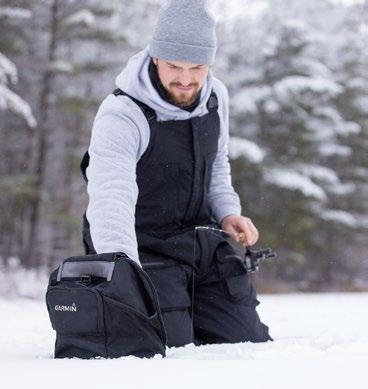
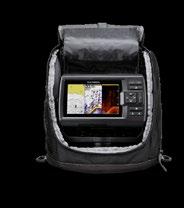



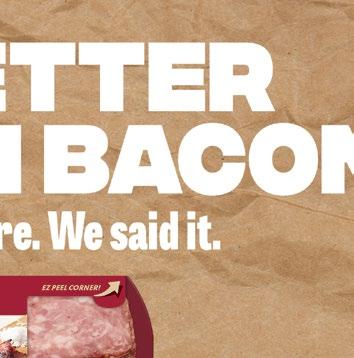



Connect with us @scheelsoutdoors SEE WHAT’S BELOW SHOP HERE ICE FISHING FINDERS

16 >> iceteam.com >> Ice Digital December 2022 Issue
When I was a kid, my dream job was to be a hunting and fishing guide. My dad wasn’t technically a guide, but all of his friends considered him the resident guide, because he was always taking people fishing and helping them become better anglers, feed their families, and creating memories. I still run into people that knew my dad who the first thing they do is launch into a story about that time he took them fishing. He helped so many people and I always wanted to follow in his footsteps but make an actual living at it. I began guiding ice anglers on small ponds throughout southern New Hampshire. I thought that because I got my guides license and “hung a shingle” that customers were going to be beating my door down. I also thought that transitioning from carpentry to being a fishing guide would be my chance to stop working so hard. Boy was I in for an awakening.
The alarm on my phone goes off at 4:30am six days a week, playing a tune that I think is designed to make you happy about waking up. The tune often gets stuck in my head for at least part of the ride to the lake and is usually the reason I turn on the radio. I normally wake in one of three ways; excited, exhausted, or both. I may be excited because the weather forecast is good and the fishing has been good, or maybe it’s the clients I’m most excited about, but when I have strung several long days together, and the weather looks less favorable, I’m usually more tired than excited.
Anyway, I brush my teeth, splash some water on my face, make my coffee, and I’m out the door, usually in about 20-minutes from the time my alarm goes off. I’m usually so tired, especially as the season wears on, that I’m in autopilot mode when I leave and if everything isn’t in the same place every day, I am sure to forget it. There’s something strange about the walk from my front door to my truck. I don’t know if it’s because I’m not quite awake but not as half asleep as when I first woke up, but it’s my least favorite part of the day. I don’t think what I do for a living really sinks in until a start the drive to work, but the second I put my truck in gear it’s as if I realize where I am headed and my whole mood changes.

I drive 1.5-hours to get to the north end of Lake Winnipesaukee. About halfway there I stop at a local bait shop to pick up bait for the day and continue on. It seems like a far drive to most, but I don’t mind it. There’s little traffic on the road at that hour and I love my job. I have a good friend who lets me store all of my ice fishing gear at a camp on the lake, including heated storage for my snowmobile and a place to store my Snowdogs and all my shelters and sleds. It’s a favor I never feel like I can fully repay. It saves me time and the hassle of trailering my gear and finding parking on a daily basis. Not to mention the wear and tear on my truck and trailer. I arrive at the camp at 6:30am. Most of my gear is ready from the day before, but I have to transfer items that need to come home each day, unplug Vexilars and load them up, and then I’m off across the lake to meet the day’s clients. Group numbers range from one angler to as many
as 30. With groups larger than ten people I usually hire another guide, one of my good friends Chuck or Shawn, to help me.
When my clients arrive at 7am, I give them a brief safety talk and let them know what to expect. I will give them my guess about how I expect the fishing to be that day, but remind them that it’s only a guess and that it’s fishing and not an exact science. I care very much about my clients and want them to catch as many fish as possible, but regardless of how many fish they catch, I want them to have a fun time. People are all different and meeting the needs of every type of person can get stressful. Some are easy and require little more than good conversation, while others can be a handful. Stress is exhausting and the older I get the more exhausting it is.
I load everyone up on my snowmobile and sleds, or sleds towed behind my Snowdog depending on the number of clients that day, and we head out to the fishing spot. Once there, the first thing I do is set up the shelter and kick the heat on. Occasionally I’ll have folks who insist they don’t want a shelter, usually repeats who know that no shelter means we can move more often if the bite is slower, so I can get right to the fishing. Others are first time ice anglers, and they’re cold. One of the most important lessons I’ve learned over the past 16 years is that client comfort is far more important than catching fish and only second to safety. Cold clients are miserable and being miserable is what they remember most. I want them to have fun and I want them to come back. The best way to ensure that is to
iceteam.com >> Ice Digital December 2022 Issue >> 17
make sure they are warm and that the conversation is good. You could say I’m part fishing guide and part therapist at times. I’m always evaluating my clients so as to anticipate their needs and get on their level intellectually or emotionally. It can be draining. I don’t know how full-time therapists do it.
Once the shelter is set up I begin drilling holes and setting up lines. We usually fish a combination of jigging rods and tip ups, depending on how the fishing was the day before. When tip up fishing on Lake Winnipesaukee for lake trout and white perch, we spread our tip ups out as far as possible so I can cover a large area and hopefully target different fish with each line. Once the lines are in, I’m not one to drive to each hole to check them or help my clients catch a fish, so I do a fair amount of walking on the ice every day.
My guide trips are six-hours long and end at 1pm. Just before the trip is over I begin picking up the tip ups and packing away anything that was left out. I’m a stickler for keeping things in their place, so there isn’t much gear left around, but there are
usually chairs and whatnot that my clients were using. Then I pack up the shelter, load everyone up, and head back to the launch. There, we unload everyone and if they kept fish that day, I get those transferred to their cooler. After a thank you and reminder that I will send them all of the images from that day in an email, I bid them farewell and head back across the lake to the camp.
Once I get back to the camp, I park my snowmobile and look at how many people I have the next day and what the weather will be like so I can determine what I will need for gear. I prep as much as I can so I don’t have much to do in the morning. The older I get the more the saying “work smarter not harder” make sense. Just like I’m always looking for ways to be more efficient, I’m also always looking for ways to make my job easier. I plug in Vexilars and organize anything that needs it before making the hour and a half drive home. Once I get home, I plug in my bait cooler and get my lunch ready for the next day before I shower and relax.

They say the average adult male burns 2000 calories a day. I read somewhere that the average
adult male participating in a winter activity burns as much as 4000 calories a day, because the body burns so many calories creating heat. I often tell my clients that if all they do is stand around and do nothing, they will be tired at the end of the day just from staying warm. The same goes for me. I don’t know how many calories I actually burn, but I know that I usually eat all day long and I’m smoked at the end of the day. Now string six days like that together for ten weeks and I’m usually cross-eyed by the end of the season. Being a fulltime fishing guide is far more exhausting that I ever imagined, but far more rewarding. As exhausting as it is, it is one of the most fulfilling things I’ve ever done and there’s nothing I’d rather be that tired from.
Tim Moore is a full-time professional fishing guide in New Hampshire. He owns and operates Tim Moore Outdoors, LLC. He is a member of the New England Outdoors Writers Association, and the producer of TMO Fishing on YouTube and the Hooked with TMO Fishing Podcast. Visit www.TimMooreOutdoors.com for more information.
18 >> iceteam.com >> Ice Digital December 2022 Issue
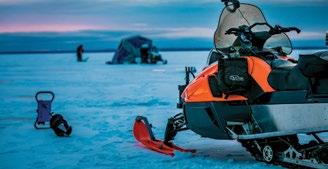


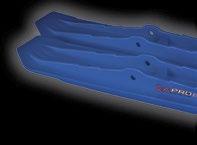
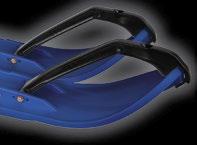








HIGH-PERFORMANCE SNOWMOBILE SKIS www.caproskis.com | 1-888-321-6789 RACING xt • Mini xt • mini MOUNTAIN/UTILITY bx • Mtx bx • mtx CROSSOVER xcs xcs TRAIL xpt • RZ xpt • RZ Maximum Floatation Utility Skis Ideal for Ice Fishing! Mtx mtx Official Skis of the CLAM ICE TEAM iceteam.com
It’s a pitch black and brutally cold morning. As we pull into the parking area alongside the south shore of Lake Superior, the sun starts to peek its presence illuminating a vast white landscape. As I take down one more swallow of coffee to warm me up, I go through the details that need to be thought about as we venture offshore into the white ice desert of Chequamegon Bay, Lake Superior. The aggressive motion of movement as we hook up our Clam Ice Shacks to the purring Arctic Cats keeps us from letting the cold into our morning bodies. We are off for another adventure on the greatest lake in the world.
We always need to mention the name Chequamegon is derived from an Ojibwa word meaning “place of shallow water,” and refers to the area of Lake Superior that is protected by the Apostle Islands and land locked areas of Redcliff/ Bayfield, Washburn, and Ashland. This area of Lake Superior, much like most of the upper Midwest has been inhabited by native Americans since the dawn of time. And for that, we always pay our respects as we make our way to our favorite fishing spots. The morning commute from the Houston cabin takes us about an hour. The scenery is nothing short of breath taking, and never gets old.
As we take off, the first important thoughts that pass through our minds are about safety. It is never cliché to think/talk about safety during the ice season. Especially when it’s Lake Superior were talking about. Things can, and often change in a hurry. We always travel on the lake in nothing more than an ATV or Snowmobile. In all honesty, we usually walk. Even though the size of the Bay seems like it goes on forever, one does not have to travel far to locate fishable waters.
Gitche Gumee ice fishing is much different from other cultures of ice angling. It is a great body of water that supports a great fishery and needs to be treated with

the uttermost respect. It can be intimidating to think about how to fish it, but in all reality, it is actually quite simple. The modern ice angler can get by with the usual walleye gear when fishing Chequamegon Bay. A heavier walleye ice rod with some braid or fluorocarbon line will work just fine. And depending on the area, monofilament will work as well (for the shallower areas). Same holds true for bait selection(s). A mix of spoons, like a Clam blade and/or your favorite Tika minnows can fit the bill. In all honesty, most lures in a typical walleye box will work. My favorite colors are golds, oranges, whites and pinks. For the deeper waters I like braid and for the shallower waters, I like fluorocarbon or monofilament. Another tid-bit, we always use a barrel swivel and a 18 inch leader and a quick snap for changing out baits on the fly. In short, Lake Superior angling is not much different than your typical walleye factory waters. However, it’s very much the scenery and the fish that make it different!
A great thing about fishing Chequamegon Bay is that it is governed by Wisconsin laws. Meaning each angler is allowed to use 3 lines. This opens up a great opportunity. So of course, we need to talk about dead sticks and the value they hold for the Gitch. I never ice fish the Superior without a couple of set lines, NEVER. Whether it be tip-ups, Jaw-Jackers or Hot boxes, set lines are important. My favorite program is to use 2 tip-ups and 1 jig stick. It’s best to space out the holes at least every 30-50 yards (yes, we cover distance). Either creating a triangle for a perimeter or a straight line works best for us. One of the best parts about using setlines on Lake Superior is depth control. There is none! Fish can be caught on set lines at any depth (even right under the ice).
There are so many reasons why Lake Superior is our favorite place to Ice fish. One of the best reasons is, you never know where the fish will come from or what species it will be. I know this type of saying can get thrown around a lot, but
it is especially true here! Gitch fish are like missiles and seldom do you find them stationary. They have a lot of room to roam, and they do just that. The species we target and often catch are Brown Trout, Splake Trout (mix between a Brook Trout and Lake Trout), Lake Trout, White-Fish, Coho Salmon, Walleyes, Pike Burbot and Smallmouth (yes ice fished Smallies). The trout and salmon are the species that seem to always be on the move and my personal favorite to catch. New modern ice fishing strategies have taught us to be mobile and relocate when the fish bite is slow. This is not always the case for this type of fishing. You just really never know when or where a trout will approach from. What is important is locations of setting up!
I always try and position our spot away from the crowds or on the outside of the crowd. It is important to not plant yourself in a position where you will get boxed in. This philosophy should hold mostly true for all fishing areas you may tackle in your own home waters. Being boxed in can be a disadvantage for roaming fish (again, Gitch fish are always on the move). Another key point is to set up the setlines at different depths. We usually fish anywhere off shore in 25-75 feet of water. The deeper areas can be good for Lakers, Splakers, White-fish and Burbot. The shallower areas are better for Browns, Splakers, Walleye and Pike. I do like to find breaks, further meaning
I like to target the areas that have 30 feet close by but drop off into much deeper depths. The jigging shacks (in our case a mix of Clam hubs and flips) always gets set up on the deeper spot with the set lines nearby covering the shallower depths. Another successful practice we use not just on Lake Superior, but on all fish outings is spread of the Clam shacks. I mentioned it earlier, WE COVER DISTANCE. It is always an advantage to spread out. Two anglers sitting side by side can work, but it seems more successful to give a single angler a shack and put the other angler
in another shack nearby. If you want to socialize, this still can be accomplished by zipping down an opening and talking. However, I have always been a fan of silence when it comes to fishing. So I encourage the chatter and walking around on ice to be held to a minimum.
The techniques we use when setting up the set lines (tip-ups and/or other) entails a simple split shot sinker, hook and live Lake Shiner. When a Trout takes a bait you can be certain the fish will not stick around. Matter of fact often they will pull out so much line that it becomes a choir to get re-set. As for the jigging techniques, I like the action of a lot of commotion on my spoon. Pinching off a Lake Shiner head and tipping my presentation with it is the preferred method. I usually drop all the way to the bottom and watch my FLX 30 for any active bogies. From there, I will intentionally rip up my bait to 10 feet or more. Lots of times, there will be schools of Smelt hanging around. Don’t let them foot you into thinking there are tons of fish. It’s when the Smelt abruptly disappear when things can get exciting. These Lake Superior Trout Species of fish never want to be fed like you may do for a perch or walleye. They want to chase and eat. So by playing keep away, you are doing the right thing! Often a young kid or a less experienced angler will out-fish others as they tend to have very random jigging cadence. Although it seems strange, you can literally reel up fast all the way to just below the ice until you get a fish to commit. Catching fish on Lake Superior through the ice is an experience every ice angler needs to have. Fishing with a translucent window underneath your feet on the greatest lake in the world is nothing short of breathtaking. See you out there, Capt. Jarrid
www.houstonsguideservice.com
Captain Jarrid Houston owns and operates HOUSTON’S GUIDE SERVICE and is a proud member of the Clam Ice Team
iceteam.com >> Ice Digital December 2022 Issue >> 21

With so many different tackle options out there, old, and new, it can be mentally challenging at times choosing what to purchase and ultimately what to use out on the ice. The truth is, they all have their time and place to shine. For me, I try to keep it simple when loading up my Clam Slim Jig box. Many anglers will have numerous jig and spoon boxes loaded to the brim with jigs, spoons, and jigging raps... often having one or two boxes for each style of bait, and that is absolutely fine... to each their own.
Over the years, I’ve learned to keep my approach light and stealthy when targeting panfish, often bringing along one pocket sized Slim Jig Box full of my miscellaneous confidence baits... confidence is everything when deciding what baits to use. We all have our “favorite baits” we start and end with when fishing, there’s a reason for that. These are your favorite baits because you more than likely catch a ton of fish with them and oftentimes when other baits don’t seem to be producing, your confidence bait will work because you’ve had success catching fish with it in the past and you’ve dialed in the cadence when fishing it. Yet, we often get caught up on thinking there’s something better out there and we get mesmerized by fancy eye catching paint jobs or because we see our role models promoting them. I myself have fallen victim to that over the years...in fact, I still have baits in their wrappers that I bought because they were supposed to be the next big thing, yet I always find myself going back to the same confidence baits time after time because I know they’ve caught fish for me in the past and if it ain’t broke, why fix it? Sure, we as anglers can take the time to learn all these new baits but for me, time on the ice is

precious and I don’t really want to use a ton of that time learning all these new baits when I know I’ve got my favorite confidence baits that will work for me. With that being said, every October I take the time to prep one box I label as my go-to confidence baits. This box will have a couple rows full of my favorite tungsten jigs in my favorite sizes, colors and cadences including everything from The Genz Drop Kick (which features a more aggressive kicking action) a Maggot Drop which features a vertical style presentation) and a few of your more standard style horizontal tungsten jigs in various sizes which is important when fishing different depths and determining what kind of mood the fish are in). In that same box, I’ll include a row of my favorite confidence spoons like the Jointed Pinhead Mino and Leech Flutter Spoons and it’s always important to carry a few Jigging Raps like the Tikka Mino from Clam Pro Tackle for aggressive bites.
Bottom line here is to help all of you keep your approach light and stealthy while still having an arsenal of your confidence baits at your side in one box. Don’t think you need to buy everything that hits the market, carry only what’s worked for you in the past and what’s working for you in the present and you’ll avoid overthinking how to approach your next outing...spend more time fishing with confidence!
iceteam.com >> Ice Digital December 2022 Issue >> 23

• Best performance & features • Best sunlight-readable display • Best reliability • Best resale value • Best customer service • Best reputation Vexilar, Inc. 6667 West Old Shakopee Road, Suite 101 Minneapolis, MN 55438 952-884-5291 • www.vexilar.com A Tradition Built To Last. Vexilar.com

















26 >> iceteam.com >> Ice Digital December 2022 Issue
As winter locks its grip on the ice belt, anglers are making their way across frozen lakes and rivers to begin yet another season, chasing a cold obsession, to lay their hands on the fish that swim beneath the very water they stand on. In a matter of days these anglers create communities on the ice, neighborhoods of shanty towns dot the fridged landscape.
It may seem that the focus is fishing but spend enough time
around theses folks and you’ll begin to hear the tales of seasons gone by. Vague recollections of hunting and fishing excursions that couldn’t possibly be more fact than fiction.
As the story telling runs rampant so does the willingness to share the bounty of the fall harvest. In the Midwest this means venison. Hunters and anglers often are seemingly cut from the same cloth, and a bag of homemade jerky from a successful hunt appears to have the power to change perfect
strangers into lifelong friends.
With the seasonal abundance of wild game meat this is the perfect time to create delicious meals that are just as at home on the ice as they are on the dinner table. This should help continue to spark new ideas on ways to use this delicious protein. Here is a recipe for carne asada that can be used to launch your venison game to the next level.

INGREDIENTS:
• 2 pounds venison backstrap (Steaks can be used)
• ⅓ cup soy sauce
• ½ cup avocado oil
1 Tbs sriracha
• ¼ cup brown sugar
METHOD:
1.
2.
• 1 Tbs cumin powder
3 cloves of garlic (grated)
• ½ cup cilantro (chopped)
• Juice of 1 orange
1 tsp salt
• 1 tsp black pepper
Start by combining all ingredients except the meat in a bowl and whisk until fully combined. Pour mixture into gallon size ziplock bag. Set aside.
For the meat, butterfly the backstrap lengthwise in a spiral fashion to create a flat “unrolled” piece of meat approximately 1/3” thick. Place a piece of plastic wrap over the meat and with a meat mallet gently pound until the entire piece is a uniform thickness.
3. 4. 5.
Place meat in the bag with the mixture and ensure meat is fully coated in the marinade. Place in the refrigerator 2-4 hours.
Preheat grill to high heat. Lay meat flat and grill 3-4 mins per side. Internal temperature should hit 125° (Caution: oil may cause flare ups during the cooking process)
Once meat is lightly charred Remove from grill, cover with foil, and rest 5-10 mins. Slice the meat across the grain. Serve.
From street tacos to steak salads, this recipe can be used to create many delicious dishes. Follow the link below to see step by step how this recipe was used to make some insanely delicious burritos on “The Meat Season”
www.youtube.com/watch?v=a14G5zs63tA
Is there a task that you do so repetitively that it becomes automatic for you? A task that is so engrained into your subconscious that your brain completes the task without you even having to think about doing so? Sometimes athletes call it muscle memory. It’s how great free throw shooters shoot such a high percentage from the charity stripe and how great 3-point shooters can always seem to find that stroke even at mid-court. As a fly-fishing guide I’ve also realized that it’s why some people’s overhead cast is so much better than others’ cast. The folks that have to think through each step of the cast struggle while those that can perform the cast without even much intentional effort make it look like poetry in motion. I’ve even noticed that when teaching others to tightline nymph (also known as Czech-nymphing or Euro-nymphing) for trout, some clients struggle to detect the strike on the sighter above their flies. It’s something
that I take for granted because I can see the strike on the sighter and set the hook without even really making a conscious effort. Working with these clients is good for me because it makes me step back for a moment and realize that it is NOT automatic for everyone and as such it becomes a skill that requires practice and honing until it starts to become an automatic, musclememory action for them.
I have also noticed a similar thing when I ice fish. There is something that I, as well as many other anglers, do so subconsciously that I take it for granted. As an Ice Team Pro, I get the opportunity to teach ice fishing to many people across the ice belt that have never dropped a jig through the ice. It’s at these times that I realize how automatic this “thing” is for me and how much I take it for granted. That “thing” is the cat and mouse game we play with the fish that come into view whatever we are offering them below
the ice. The patient game of raising the jig away from the fish, making them chase it. I do this so often that I don’t even think about it but working with many newcomers has made me realize that it’s a learned behavior and not something that it instinctive to most ice anglers. It’s hard for me to remember a time where I DIDN’T try to make a fish chase my jig once I saw it on my Vexilar, but surely somewhere along the line in my development as an ice angler, I had to learn this skill as well. It’s also very interesting to me that for many of the newcomers I work with, it’s a skill they struggle to acquire. There are a few that pick it up right away and take the jig away at just the right rate. These folks I consider as being in the “middle of the spectrum”. At the other end of this spectrum, I have worked with others that raise the jig so quickly when I tell them to make the fish chase that it completely disappears from the field of vision for that fish before they would even have a chance to follow it. On the other end other end of the spectrum,

28 >> iceteam.com >> Ice Digital December 2022 Issue
there are some that only raise it a small amount before they stop and I have to keep reminding them to keep raising their jig as far as the fish will follow it.
One of the key concepts to understand in making a fish chase the jig is the longer you can get that fish to chase or the higher you can raise them, the greater your chances are that that fish will take the jig. Therefore, it is essential to figure out the maximum amount they will come up before they strike or give up. I like to refer to that as the “ceiling” and it can vary from day to day, hour to hour, or even spovt to spot. The ceiling is a nuance that is often very hard for beginning ice anglers to grasp. Most will either continue to raise after the fish loses interest or only raise a small amount and stop even though the fish is obviously more than willing to continue chasing. Speed is also very important. You don’t want to raise the jig so fast that a fish can’t keep up with it, but you also don’t want to raise it so slowly that the fish doesn’t feel challenged and loses interest in the jig. This can often vary depending on the mood of the fish; negative, neutral, aggressive. The speed can often vary based on species targeted. The takeaway speed that I typically raise the jig for bluegills is often slower than it is for crappies, and the speed that I raise for
lake trout can sometimes be as fast as I can reel. There is no one-size-fits all for ceiling or speed that the jig is raised, so a large part of every day on the ice is figuring out those two factors.

Having the right mindset is also important. One of the things that helps me when making the fish chase, is keeping in mind that I just want to move it fast enough and high enough that the fish eventually feels like their chance to eat will disappear if they don’t take advantage of the opportunity. I actually try to visualize this scenario below the ice as it’s happening and I feel that helps me tremendously! I believe this “fight or flight” decision by the fish is what happens very near the ceiling. The fish suddenly realizes that if they don’t eat that jig VERY soon, it will probably disappear.
Typically, I have found that the longer and higher a fish chases a jig, the more committed that fish becomes. It is very rare for a fish to follow a jig up two, three, four feet or more and not bite. If they’ve already put the calories into following the jig that far, it just wouldn’t make sense for them to not try and recoup some of those calories by eating. The fish that you can only raise a few inches are the ones that are much tougher to trigger. They are not even interested
in expending the calories to chase so there’s no real incentive for them to take in the additional calories.
Getting the cadence right is important too. It’s amazing to me the number of first-time ice anglers I’ve worked with that cannot jig and raise at the same time. It’s the ice fishing equivalent of not being able to walk and chew gum at the same time. Unfortunately, if jigging stops as the jig starts to raise, the fish will often lose interest and swim away. For many of us it’s muscle memory to continue our cadence as we raise the jig…we do it without even thinking about it. If it’s not automatic for you, it will require a conscious effort, every time, until it eventually becomes so.
The possibility that the buggy-looking thing swimming in front of their nose may swim away before they get a chance to eat it, is one of the most effective ways that I know of to trigger a fish to bite. This makes raising the jig a technique that is very advantageous to perform without having to think about it and the only way to get there is to practice. Not only does practice make it perfect, but it also creates muscle memory and THAT makes it automatic.
iceteam.com >> Ice Digital December 2022 Issue >> 29 Know Before You Go Call 612-229-3941 or visit www.winrectech.com for more information. ICESPY™ is the remote ice thickness monitor that lets you fish your favorite spot sooner, longer, smarter. Say Hi to ICESPY™
reserved. No ice is ever completely safe. This device is meant to provide information as to the possible thickness of the ice that exists only where the unit is located. Winter Recreation Technologies LLC makes no warranties, express or implied, as to the ability of this product to determine whether any ice surface is safe to be entered upon by the user. Any act or failure to act based on a reading from this product shall be at the user’s own risk.
© 2022 Winter Recreation Technologies LLC. ICESPY™ by
Winter
Recreation Technologies LLC. Patent Pending. All rights


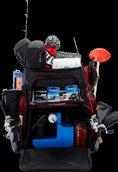



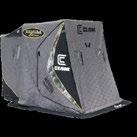

Connect with us @scheelsoutdoors GEAR UP WITH w Connect with us @scheelsoutdoors PORTABLE + WARM






“Whoa, I can see my jig all the way on the bottom!” My buddy shouted in amazement from a few yards away on a frozen, zebra mussel infested lake in Otter Tail County, Minnesota. He was astonished at the water clarity in the lake we were fishing in early 2022, especially considering the visibility in lakes where he’s from is usually rather limited. We were fishing bluegills in twenty feet of water, and peering down the hole was like looking into an aquarium: weeds, fish, rocks and sand were all clearly visible with the naked eye!
As some may already know, zebra mussels are an invasive species that are finding their way into more and more lakes across the state of Minnesota. The particular lake we were fishing has been teeming with zebra mussels for the better part of a decade, like a handful of other water bodies in Otter Tail County. Many lakes here are connected to each other, either via the Pelican or Ottertail River, which creates an easy mode of transportation for the tiny, striped mollusks. Zebra mussels filter out tiny food particles in the water (particularly algae) and can filter around one
quart of water each day. In turn, this can limit food for other aquatic species and greatly increases water clarity in affected lakes. With greater water clarity, weed growth can boom and create even more underwater habitat for fish to hide.
Efforts continue in Minnesota trying to reduce the spread of zebra mussels through education, outreach and inspections at public boat landings. Even with the increase in mitigation measures, however, zebra mussels continue to slip under the radar and are infesting new waters every year in Minnesota. Even though fishing can still be productive in infested waters, invasive species are never a good thing due to increased competition with native species. It’s still our collective responsibility to try to reduce the spread by draining our boats, removing any weeds and safely disposing of our leftover minnows.
So, the question remains: Are zebra mussels making our fisheries worse? That’s the loaded question I hear often and is a hard one to answer. There are lakes in my core area of Otter Tail County that have had zebra mussels now for close to two decades… and a few of those still produce some of the best panfishing in the area. While I don’t think zebra mussels necessarily make fishing worse, I certainly believe fishing tactics need to change and account for the increased water clarity and weed growth. For example, many lakes that used to be an all-day bite in the basin have shifted to more of a dawn and dusk bite. Simply put, the fish are still there–you just need to adapt like they have.
I’ve found that when targeting panfish in lakes with zebra mussel populations, weeds are key. Luckily, with the extremely clear water, vegetation is usually abundant. Panfish utilize weeds to ambush prey, as protective cover from predators and for shade from UV rays. I always start my search looking for good stands of weeds on structure–points, inside turns and humps are all good starting areas. If you find weeds on structure adjacent to a main lake basin, you’ve got a great starting recipe for putting some panfish topside!
Both crappies and sunfish will roam the expansive weed beds during the day on these clear lakes, and many times I’ve found

I need to get into the thick of it if I want to consistently catch fish. This is where great electronics come in handy. I utilize the low power mode on my Vexilar FLX-28 almost every trip on the ice, as it reduces the power output of the flasher and helps reduce clutter–allowing me to more effectively fish through the weeds. It’s an invaluable tool that I utilize all the time fishing shallow water!
Weather conditions also affect how I approach zebra mussel waters. On days where there is substantial cloud cover, the fish tend to be more aggressive and gravitate closer to the edges of the weeds, rather than buried in them. I’ll start by drilling a zigzag pattern of holes, parallel to the weed edge so that some holes are probing up shallower, some are right on the edge and some are even a touch off the edge. On cloudy days I’ll also tend to find an occasional school hanging just off the weed edge during daylight, so the zigzag line of holes in varying depths helps me stay on fish.
If skies are clear or only have an occasional passing cloud, the fish generally tend to be more neutral to finicky and can take some real coercion to get them to take a swipe at an offering. It can take downsizing and fishing much more methodically to convince fish to bite. Panfish also seem to hold much tighter inside the weeds rather than hanging on the edge if it’s a day where the sky is painted blue.
w @scheelsoutdoors
gear up for the season
SHOP HERE ICE FISHING GEAR




While panfish utilize weeds and available cover during the day, the fish almost always seem to make a predictable movement in the evenings. Generally, there will be a flurry the last half hour or so of light where the fish will be on the chow. This is the time to set up shop on the weed edge, trying to connect with as many fish as possible as they vacate their shallow cover and head to the nearby basins to feed. After dark, the action in most lakes will shift to crappies and the fish seem to scatter, roaming the basin for an easy meal of invertebrates and baitfish. These fish might not be as aggressive as they were right before dark, but they can often still be caught fairly easily using a variety of jigs and spoons. Bites like this can last all night long, and when you see a community spot littered with fish houses, I’d be willing to bet it’s in a basin crappie spot adjacent to a weed edge. Connect with us
Whether it’s overcast or clear, day or night, I almost always start my search with a Clam Drop Jig paired with some kind of plastic or euro larva. There are a ton of Maki plastics that are great fish enticers, with a few of my favorites being the Polli and the Jamei. Since the water is clear, I’ll generally gravitate to more natural colors—chartreuse, red, white, and motor oil all seem to produce well for me. I will usually start out with a 1/16oz Drop Jig tipped with a plastic in one of the colors I mentioned above and adjust from there. If the fish seem to be rushing in and crushing my bait, I’ll either stick with what I’m using or switch to an even more aggressive presentation like a Clam Pinhead Minnow. If the fish are short striking my bait, I may opt for tipping my jig with a few euro larva or even downsizing to a 1/32oz Drop Jig.
These are just a few tips and tricks I’ve learned over the years exploring the crystal-clear waters in Otter Tail County. After establishing a repeatable pattern, finding panfish has become somewhat of a systematic process that has allowed me to stay on fish consistently from lake to lake. While currently I haven’t seen much of a dip in productivity in infested lakes, that could change with time. Will zebra mussel infested waters continue to produce fish down the road, or will they suffer?

While it may be too early to know the answer, I do know that some of my favorite lakes contain zebra mussels and continue to be extremely productive for the time being. So, if trying a lake with zebra mussels seems intimidating, don’t fret. Try utilizing a few of the tactics listed here and you might be surprised just how good the fishing can be! Good luck!

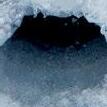



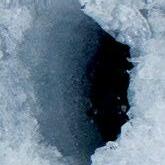

Watch the K-drill in action at kdrillauger.com Made By AWC 6667 West Old Shakopee Rd, Suite 102 Bloomington, MN 55438 952-224-3649 Patented Technology #7,946,355 & #10,544,626 Order direct on-line now or get one at your favorite tackle shop kdrillauger.com Official Member K-Drill is Made in the USA ` Requires ½" drill chuck (see web site for recommended drills) ` Foam float prevents the drill from sinking ` Thermal wrap on light weight aluminum shaft ` Durable composite flighting ` Drill through 36" of ice without extension (12" and 18" extensions available) ` ` Large center point for safer drilling of old holes ` FREE blade sharpening for the life of the product (see web site for details) 6" 7.5" 8.5"



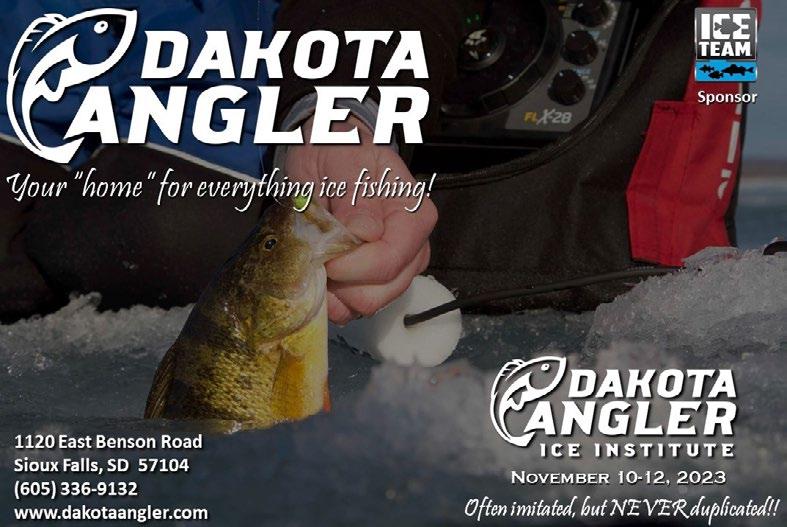
NEW ICE FISHING TECHNOLOGY FROM RLVNT THE HARDWATER BRONZE LENS Keep your eyes covered in the brightest conditions on the ice or in the snow with polarized lenses that still let you see your screens and devices. rlvnt.life/hardwater Enhance your outdoor experience.
Ice Team Member - Adam Griffith














































































































































